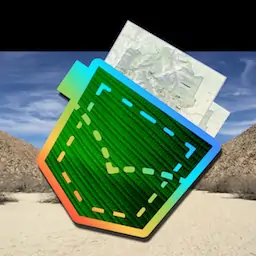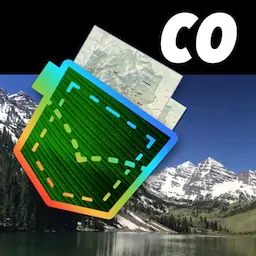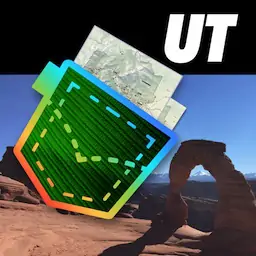"Hovenweep Castle" by U.S. National Park Service , public domain
GeologyHovenweep |
Hovenweep
National Park Service
U.S. Department of the Interior
Hovenweep National Monument
Geology
This pothole, worn into the Dakota Sandstone on the canyon rim, was formed by a
combination of water and wind erosion. Potholes collect and hold water thus providing
a unique microenvironment for communities of algae, mosses, fairy shrimp, and insects.
History
Burro Canyon Conglomerate along
the Little Ruin Canyon Trail.
Hovenweep National Monument is located on
Cajon Mesa in the northwest quadrant of the
San Juan River Basin. Mesa means ‘table’ in
Spanish and generally implies a highland that
is fairly flat on top. Cajon Mesa is tilted to the
southwest starting at 6,800 feet near Cutthroat
Castle and ending up at 4,950 feet southwest
of Cajon ruin.
Despite the many deep and revealing canyons
on Cajon Mesa, only two geologic formations
are easily visible at Hovenweep. The earlier of
these to be deposited was the Burro Canyon
Formation laid down between 100 and 136
million years ago in the early Cretaceous
period by a river and floodplain complex
containing occasional small brackish ponds.
It is composed of white conglomerate, green
shale, mudrock, and sandstone layers with
interspersed pebbles and cobbles of chert,
silicified limestone, and quartzite. The
Burro Canyon Conglomerate is easily seen
at Cutthroat Castle and along the canyon
crossing section of the Little Ruin Canyon
trail. This conglomerate was an important
source of material for tool production during
ancestral Puebloan times. Also look for the
green shale that can be seen along the upper
portion of the Holly Trail.
After the Burro Canyon Formation was
deposited there was a fairly long period of
erosion lasting almost until the end of MidCretaceous times. In geology this is known
as an “unconformity” because one or more
layers of rock are missing from the geologic
record - usually due to erosion.
Deposited during late Cretaceous times
(30-70 million years ago) and representing a
transition from river to swamp to marginal
marine conditions, porous Dakota Sandstone
is the caprock on Cajon Mesa and the other
layer visible from within the monument. It
comprises the open slickrock on the canyon
rims and was utilized as a building material
and for manos and metates, implements used
to grind corn in ancestral Puebloan times. In
addition to this yellow/gray sandstone, the
Dakota Formation is composed of mudstones
and a few thin beds of coal. Look for coal
deposits along the trail to Twin Towers and in
the canyon crossing.
Together, these two geologic strata are
responsible for the canyonhead seeps that
were so important to Hovenweep settlement
patterns. Seeps occur where the porous
Dakota sandstone meets the relatively
impermeable Burro Canyon shale. Water
percolates slowly down through the Dakota
Sandstone and is channeled horizontally
along the top of the Burro Canyon Shale to
the nearest available surface opening. When
the seep appears in a canyon wall, as is the
case with all of Hovenweep’s seeps, they often
form small caves or alcoves.
While only two geologic strata are easily visible
within the monument, the landscape features
that make up the horizon have an interesting
geologic story. During the Miocene epoch, 1025 million years ago, masses of molten trachyte
(fine-grained, light colored, igneous rock)
intruded all the way up into the Mancos Shale
(a layer of rock which lies atop the Dakota
sandstone and has since been eroded away in
this area). This molten magma never reached
the surface and hence cooled slowly forming a
mounded bed of crystalline igneous rocks. In
the Pliocene epoch the overlying Cretaceous
and Tertiary beds of rock were eroded away
exposing what are now known as Sleeping Ute
Mountain to the east and the Abajo Mountains
to the west. In geologic terms these formations
are known as “laccoliths.”
Protect the past
for the future
Your help is needed to preserve Hovenweep
National Monument. There are several
things you can do to preserve and protect
Hovenweep for future generations:
• Stay on designated trails and away from fallen
walls and mounds of stone. Walking on or
near walls and structures weakens them,
accelerating their deterioration.
• Areas behind chain barriers are closed to
protect fragile sites. Do not cross these
barriers.
Sediments deposited on Cajon Mesa continued
to erode through the late Pleistocene up to
arly Recent times (6-10 thousand years ago).
It was around this time that early people, the
Archaic, wandered this area in search of game.
They utilized caves and overhangs for shelter,
and shaped metamorphic and igneous rocks
to make points and hammers. By A.D. 700
the bow and arrow was being utilized to more
effectively hunt smaller game as the people
in this region settled into a more agricultural
lifestyle. The majority of the reddish-brown
loess soils that are predominant in this area
are from the fine grained soils of Monument
Valley and the lower reaches of the San Juan
River. They were deposited here by southsouthwesterly winds in Recent times (10,000
years ago to present). This soil allowed the
ancestral Pueblo people to grow crops of
corn, beans, and squash for hundreds of years.
Mostly composed of fine-grained sandstone
with a reddish coating of iron oxide, this soil
supported what was once a densely populated
area. Today it still provides fertile cropland for
alfalfa, bean, wheat and safflower farmers in
nearby Montezuma Valley communities.
• Take photographs; do not take artifacts. Any
person who excavates, removes, damages,
alters, or defaces any archeological resource
on federal lands is subject to arrest and felony
prosecution as dictated by the Archeological
Resources Protection Act of 1979.
• Eat at designated picnic tables. Do not eat
or leave trash at archaeological sites. Food
attracts rodents that will burrow and build
nests in fragile structures.
• Pets are allowed on trails but must be on a
six foot leash at all times.
• Look but do not touch. The oils from you
hands permanently stain rock surfaces.
Protect Yourself
• Bring enough water for yourself and your
pets.
• Respect the wildlife. Venomous insects and
snakes live in the Southwest.
• Wear sunscreen and hat; rest often.
• Do not eat plants. Some may be poisonous.
EXPERIENCE YOUR AMERICA




